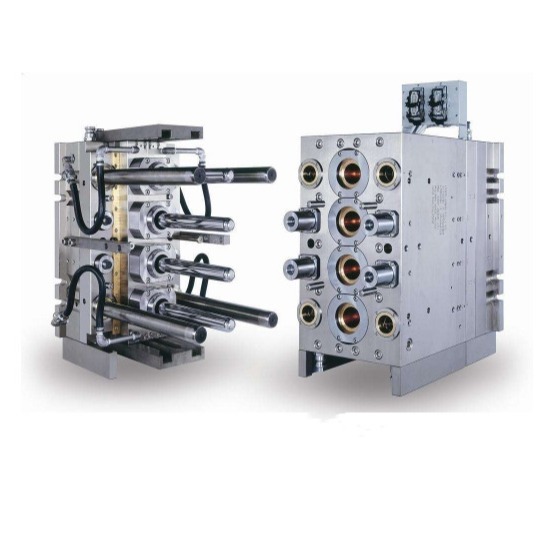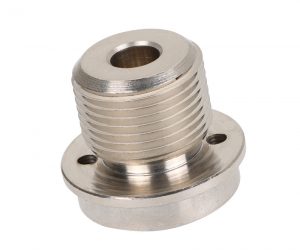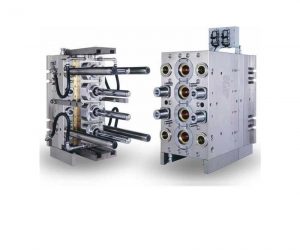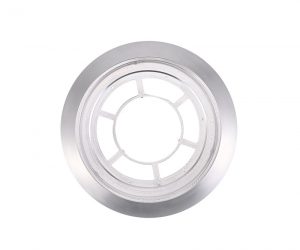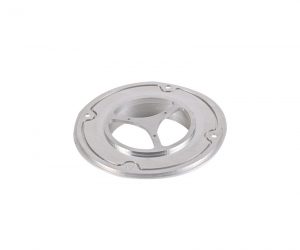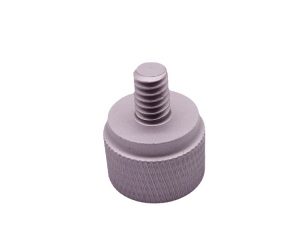As industries continue to evolve, the role of plastic molding as a catalyst for innovation and efficiency becomes increasingly prominent. Its transformative ability to produce high-quality, complex parts at scale positions it as an indispensable component of modern manufacturing ecosystems. By embracing ongoing advancements in materials and techniques, the future of plastic molding promises to unlock new possibilities for creativity and functionality across diverse applications.
I. Introduction to Plastic Molding
A. A Historical Perspective
The journey of plastic molding can be traced back to the late 1800s with the groundbreaking invention of the first injection molding machine by John Wesley Hyatt in 1872. This pivotal moment marked the inception of a revolutionary manufacturing paradigm that transitioned from a mere experimental technique to a cornerstone of modern production. Through the decades, plastic molding has undergone extraordinary advancements, propelled by innovations in materials, machinery, and engineering practices. Its evolution has transformed it into a vital industrial process, facilitating the mass production of an extensive range of products and components fundamental to numerous sectors.
B. Key Concepts and Terminology
Central to the plastic molding process is a meticulously coordinated series of operations transforming raw plastic into tailored components. This intricate process encompasses several critical terms, such as mold design, material preparation, various molding methods (injection, compression, blow molding), cooling and solidification, and part ejection. A nuanced comprehension of these foundational concepts is essential for navigating the multifaceted landscape of the plastic molding industry and harnessing its expansive capabilities.
C. The Significance of Plastic Molding in Industry
The ascendancy of plastic molding is attributable to its manifold advantages relative to conventional manufacturing methods like machining, casting, or stamping. Its unparalleled versatility allows for swift and economical production of complex parts with remarkable dimensional accuracy. This adaptability, in tandem with the ability to utilize a wide spectrum of plastic materials, renders plastic molding a vital instrument for industries striving to enhance their competitive edge, optimize operations, and innovate product offerings.
II. Core Principles of Plastic Molding
A. Material Diversity in Molding
The plastic molding domain is anchored by a plethora of materials, each possessing distinct physical and chemical characteristics. From ubiquitous thermoplastics like polypropylene and acrylonitrile butadiene styrene (ABS) to sophisticated engineered polymers and composite materials, the industry can strategically select optimal materials for a myriad of applications. This material versatility, coupled with breakthroughs in material science, propels the ongoing advancement and diversification of the plastic molding sector.
B. Variations in Mold Design and Their Uses
The efficacy of the plastic molding process hinges on an array of mold designs, each precisely engineered to meet specific product specifications and production requirements. This ranges from simple single-cavity molds to intricate multi-cavity systems. The judicious selection of mold types is paramount, ensuring the consistent production of high-quality components. Moreover, the incorporation of specialized mold features—such as core inserts, advanced cooling systems, and precise ejection mechanisms—augments the capacity of plastic molding, enabling the fabrication of highly detailed and tailored products.
C. Differentiating Thermoplastic and Thermosetting Plastics
In plastic molding, two fundamental categories of materials are predominantly utilized: thermoplastics and thermosetting plastics. Thermoplastics—like polyethylene and polycarbonate—exhibit the remarkable ability to be melted and solidified multiple times, rendering them ideal for cyclical processes like injection molding. Conversely, thermosets undergo a permanent chemical transformation during the molding process, resulting in a durable, cross-linked structure that excels in applications demanding superior heat resistance and dimensional stability. An in-depth understanding of the unique attributes and processing needs of these material types is crucial for optimal material selection for various applications.
III. Designing and Fabricating Mold Components
A. The Art and Science of Tooling Design
The efficacy of plastic molding is profoundly influenced by the design and engineering of the mold components. From conceptualization through to the final fabrication, this intricate process necessitates a thorough comprehension of material properties, part geometry, and mold design principles. By leveraging cutting-edge computer-aided design (CAD) software and innovative tooling methodologies, designers can forge customized, precision-engineered molds that facilitate the efficient and reliable production of plastic components.
B. The Role of Core Inserts and Cavities
The core and cavity elements of a mold are instrumental in defining the final contours and features of the molded part. Core inserts, responsible for constructing the internal architecture, and cavities, which outline the external contours, must be crafted with meticulous attention to detail to guarantee the precise replication of desired geometries and dimensions. The strategic integration of these elements, alongside the placement of sophisticated cooling channels and ejection mechanisms, is vital for achieving the ideal equilibrium of product quality, operational efficiency, and cost-effectiveness.
C. Mold Surface Texture and Finishes
The texture and finish of mold surfaces profoundly influence both the aesthetics and functional performance of the final molded parts. From high-gloss, reflective surfaces to textured finishes designed to enhance tactile properties or visual appeal, the choice and application of suitable surface treatments are fundamental to the plastic molding process. Utilizing leading-edge surface engineering techniques, mold designers can produce components that not only exhibit enhanced visual attractiveness but also increased durability against wear and scratches.
IV. Process Control and Quality Assurance: A Paradigm of Precision and Reliability
A. Temperature Control and Cooling Systems: The Sine Qua Non of Molded Plastic Parts
The meticulous regulation of mold and material temperatures throughout the molding cycle, coupled with the judicious placement of cooling channels and the optimization of cooling parameters, is crucial for ensuring the consistent quality and dimensional accuracy of molded plastic parts. By harnessing the synergy between temperature control and cooling systems, manufacturers can mitigate the deleterious effects of warpage, residual stresses, and other defects that can compromise the integrity of the final product. This necessitates a profound understanding of the complex interplay between thermal dynamics, material properties, and mold design.
B. Defect Identification and Remediation: A Multifaceted Approach to Quality Assurance
Despite the sophistication of modern plastic molding technology, the specter of part defects still looms large. To address this, skilled technicians and quality control specialists must employ a multifaceted approach, integrating advanced inspection techniques, data analysis, and process optimization to identify the root causes of common defects, such as sink marks, voids, and weld lines. By adopting a holistic perspective, manufacturers can implement effective remediation strategies, ensuring that each molded part meets the exacting quality standards demanded by industry.
C. Quality Management and Testing Methods: A Culture of Continuous Improvement
The implementation of comprehensive quality management systems and rigorous testing protocols is essential for maintaining the high standards and consistency required in the plastic molding industry. By embracing a culture of continuous improvement and data-driven decision-making, manufacturers can verify the conformance of their products to customer specifications and industry regulations. This involves the integration of in-process monitoring, statistical process control, and both destructive and non-destructive testing methods, thereby ensuring the delivery of superior-quality parts and components that exceed customer expectations.
V. Advanced Techniques and Innovations: A New Frontier in Plastic Molding
A. Rapid Prototyping and Digital Manufacturing: A Synergistic Convergence
The confluence of digital technologies and plastic molding has given rise to a powerful synergy that is revolutionizing the future of product development and manufacturing. By integrating rapid prototyping techniques, such as 3D printing, with advanced computer-aided design (CAD) software and digital manufacturing workflows, plastic molding companies can drastically accelerate the product design and development process. This integration of additive and subtractive manufacturing methods enables the creation of custom molds and tooling, as well as the production of highly personalized plastic parts, unlocking new frontiers in product innovation and customization.
B. Additive Manufacturing and Injection Molding: A Paradigm Shift in Plastic Molding
The integration of additive manufacturing (3D printing) and injection molding has further enhanced the capabilities of plastic molding technology. By leveraging the design freedom and rapid prototyping capabilities of 3D printing, manufacturers can create custom molds and tooling for injection molding, enabling the production of complex, personalized parts with unprecedented speed and efficiency. This convergence of additive and subtractive manufacturing techniques has opened up new possibilities in the world of plastic molding, paving the way for innovative solutions across a wide range of industries.
C. Biodegradable and Sustainable Plastics: A Commitment to Environmental Stewardship
As the global community grapples with the pressing issue of environmental sustainability, the plastic molding industry has responded with a renewed focus on eco-friendly materials and production methods. Manufacturers are exploring the use of biodegradable, compostable, and recycled plastics, as well as implementing closed-loop recycling systems and adopting energy-efficient production practices to reduce their carbon footprint. By embracing these sustainable innovations, the plastic molding industry can position itself as a leader in the development of environmentally responsible products and solutions, contributing to a more sustainable future.
VI. Case Studies and Best Practices: A Testament to the Power of Plastic Molding
A. Success Stories from Industry Leaders: A Showcase of Innovation and Excellence
The transformative impact of plastic molding can be witnessed through the success stories of leading brands and companies across various industries. By leveraging the versatility, precision, and efficiency of this manufacturing technique, these organizations have been able to bring innovative products to market, streamline their operations, and enhance their competitive edge. From the development of revolutionary automotive components to the creation of groundbreaking medical devices, these case studies showcase the power of plastic molding in driving innovation and shaping the future of manufacturing.
B. Challenges and Solutions in Plastic Molding: A Journey of Continuous Improvement
The journey towards success in the world of plastic molding is not without its challenges. Manufacturers have had to navigate a range of obstacles, from material selection and mold design to production issues and supply chain constraints. By exploring the strategies and solutions employed by industry leaders to overcome these challenges, we can gain valuable insights into the critical factors that contribute to the long-term success and sustainability of plastic molding operations. These real-world examples highlight the importance of technical expertise, process optimization, and collaborative problem-solving in the ever-evolving landscape of plastic molding.
C. Future Trends and Predictions: A Vision for a Sustainable Future
As the global economy continues to evolve, new markets and opportunities are emerging for the plastic molding industry. From the rising demand for sustainable products in developing regions to the growing needs of emerging industries like renewable energy and smart technologies, the potential for plastic molding to drive innovation and growth is vast. By examining the trends and dynamics shaping these future prospects, we can gain a deeper understanding of the strategic imperatives that will guide the plastic molding industry in the years to come, positioning it as a key contributor to the development of a more innovative and sustainable future.
VII. Environmental Considerations and Sustainability: A Precarious Equilibrium
A. The Paradox of Progress: Green Manufacturing in a Plastic World
The plastic molding industry, a cornerstone of modern manufacturing, finds itself at a critical juncture. Its very existence, inextricably linked to a material synonymous with environmental degradation, necessitates a radical reimagining of its operational paradigm. The pursuit of "green" manufacturing is not merely a trend, but a desperate, albeit potentially transformative, necessity. The industry's survival hinges on its ability to navigate the treacherous currents of eco-conscious consumerism, stringent regulations, and the looming specter of resource depletion. This requires a multifaceted approach, encompassing not just the adoption of energy-efficient technologies and renewable resource utilization, but a fundamental shift towards closed-loop systems capable of dismantling the linear "take-make-dispose" model. The challenge is to decouple economic growth from environmental destruction, a Sisyphean task demanding both technological innovation and a profound cultural shift.
B. Waste Management: A Gordian Knot of Complexity
Waste management in the plastic molding industry transcends simple recycling initiatives. It demands a systemic overhaul, addressing the entire lifecycle of plastic products, from design for disassembly to the development of advanced recycling technologies capable of handling the complex chemical compositions of modern plastics. The current recycling infrastructure, often fragmented and inefficient, is woefully inadequate to manage the sheer volume of plastic waste generated. Moreover, the economic viability of recycling remains a significant hurdle, often overshadowed by the cheaper, albeit environmentally disastrous, option of landfilling. A truly sustainable solution requires a concerted effort involving manufacturers, policymakers, and consumers, fostering a collaborative ecosystem that incentivizes responsible production and consumption patterns. The challenge is not just technological, but also socio-economic and political.
C. Lifecycle Analysis: Unveiling the Hidden Costs
Lifecycle analysis (LCA) is no longer a mere regulatory compliance exercise; it is a critical tool for revealing the often-hidden environmental costs associated with plastic molding. A comprehensive LCA must transcend the narrow confines of production, encompassing the entire product journey, from raw material extraction and processing to transportation, usage, and end-of-life management. This requires sophisticated data collection and modeling techniques, capable of capturing the complex interplay of environmental impacts across various stages of the lifecycle. The results of such analyses can inform the development of more sustainable product designs, optimized manufacturing processes, and effective waste management strategies. However, the true value of LCA lies not just in identifying problems, but in facilitating a data-driven transition towards a more circular and regenerative economy.
VIII. Conclusion: A Future Cast in Uncertainty
A. Reflections on a Transformative Technology
This exploration of plastic molding has revealed a technology both powerful and problematic. Its transformative impact on countless industries is undeniable, yet its environmental legacy remains a source of profound concern. The journey from rudimentary techniques to sophisticated automated systems reflects a relentless pursuit of efficiency and innovation. However, this progress must now be guided by a renewed commitment to sustainability, ensuring that the benefits of plastic molding are not overshadowed by its environmental costs.
B. Navigating the Uncertain Future
The future of plastic molding is not predetermined. It is a future that will be shaped by the choices we make today. The industry's ability to adapt to evolving environmental regulations, embrace sustainable practices, and invest in cutting-edge technologies will determine its long-term viability. The path forward requires a delicate balancing act, navigating the competing demands of economic growth, environmental responsibility, and social equity. The ultimate success of the plastic molding industry will depend on its capacity to evolve, not merely as a producer of goods, but as a steward of the planet.
Frequently Asked Questions (FAQs)
- What are the key advantages of plastic molding over traditional manufacturing methods?
Plastic molding has several distinct benefits compared to older manufacturing techniques:
- Versatility: The plastic molding process allows for creating complex, detailed parts with a high degree of design flexibility.
- Efficiency and Speed: It’s highly automated, which means you can produce parts quickly and cost-effectively.
- Precision and Repeatability: Every part is consistent, precise, and high-quality, with minimal waste.
- Material Diversity: You have a wide range of plastic materials to choose from, each with unique properties to fit specific needs.
- Lightweight and Durable: Molded plastic parts are generally light yet strong, making them ideal for applications where weight and strength are important.
These benefits make plastic molding essential in many industries, including automotive, consumer goods, medical, and aerospace.
- What are the key differences between thermoplastic and thermoset materials in plastic molding?
The main differences between thermoplastic and thermoset materials lie in their chemical and physical properties:
- Thermoplastics:
- Can be softened and re-solidified repeatedly with heat.
- Examples include polyethylene, polypropylene, and polycarbonate.
- Suitable for injection molding and other cyclic processes.
- Thermosets:
- Undergo an irreversible chemical reaction during molding.
- Result in a rigid, cross-linked structure with high heat resistance.
- Examples include epoxy resins and phenolic resins.
- Commonly used in compression molding and other specialized applications.
Understanding these differences helps in choosing the right material and molding technique for your product.
- How does the design and engineering of mold components impact the quality and performance of molded plastic parts?
The design and engineering of mold components greatly influence the quality and performance of molded plastic parts. Here are some key aspects:
- Tooling Design and Fabrication:
- Precision-engineered molds developed using advanced CAD software and tooling techniques ensure accurate part replication.
- Proper mold design considers factors like part geometry, material properties, and production requirements.
- Core Inserts and Cavities:
- Core inserts and cavities define the internal and external features of the molded part, respectively.
- Careful design and fabrication of these elements are crucial for achieving the desired dimensions and surface finish.
- Cooling Systems and Ejection:
- Effective temperature control and efficient cooling systems reduce part warpage and residual stresses.
- Integrated ejection mechanisms allow smooth and consistent removal of the part from the mold.
By optimizing mold component design and engineering, manufacturers can produce high-quality, dimensionally accurate plastic parts that meet or exceed customer specifications and industry standards.
